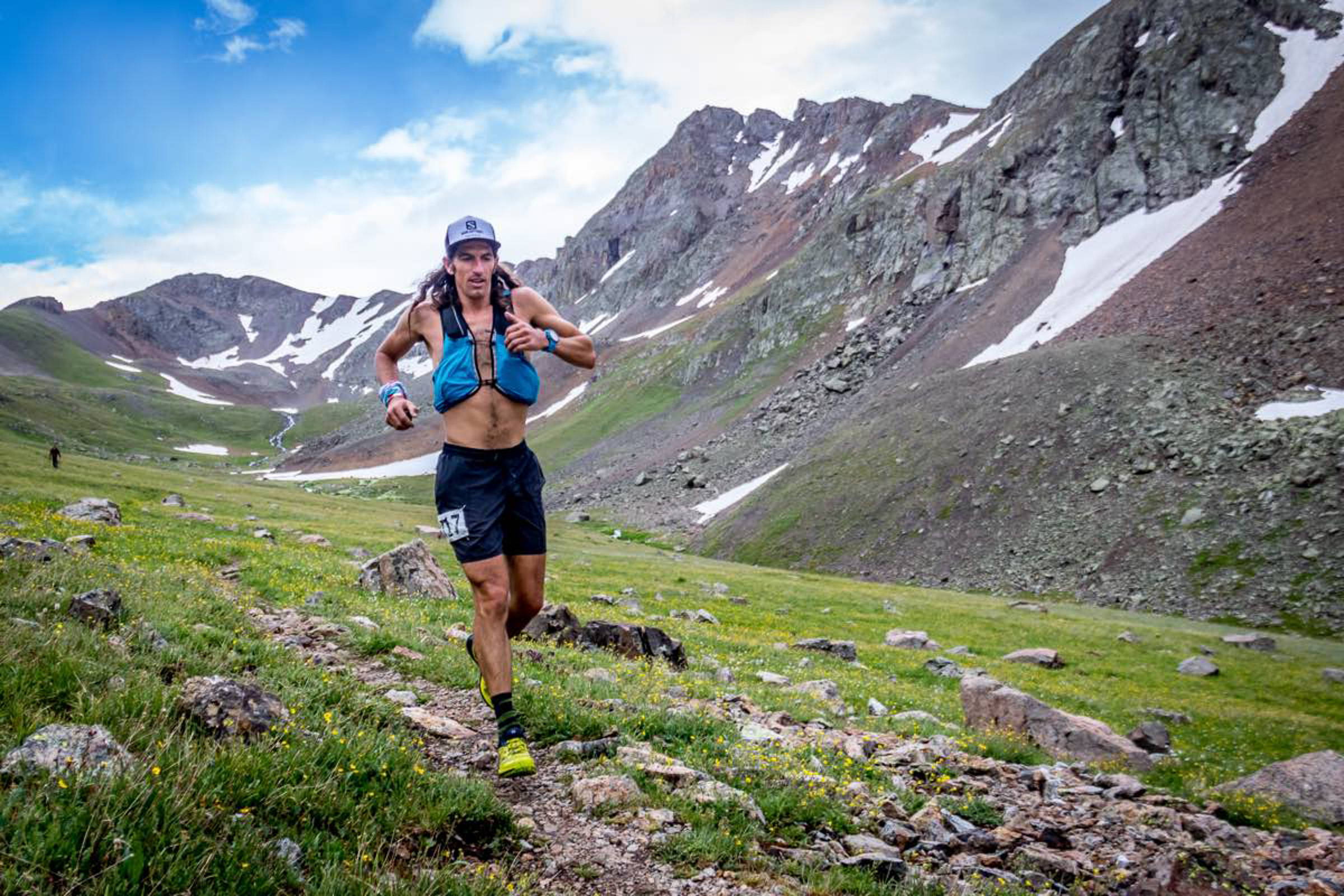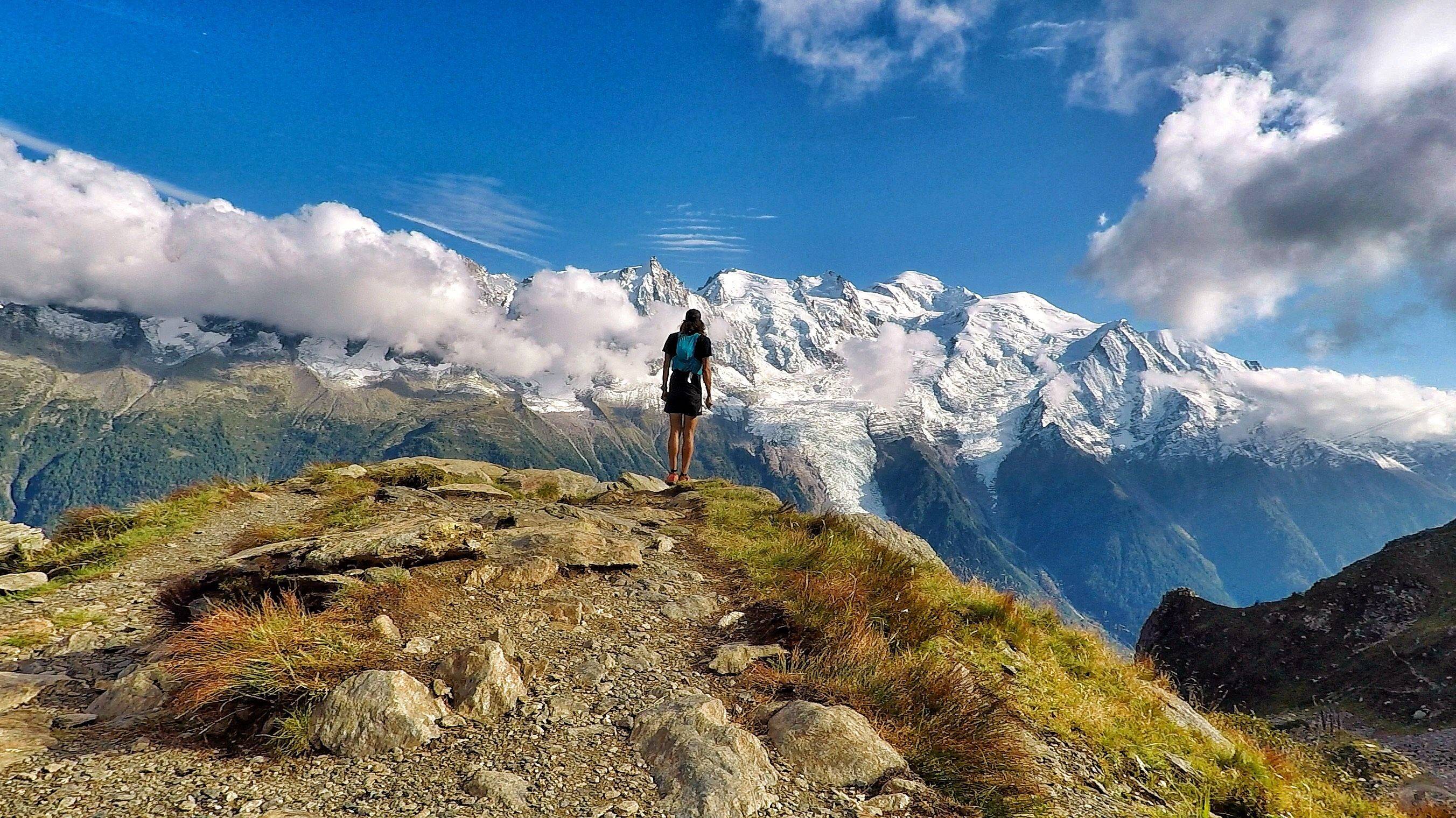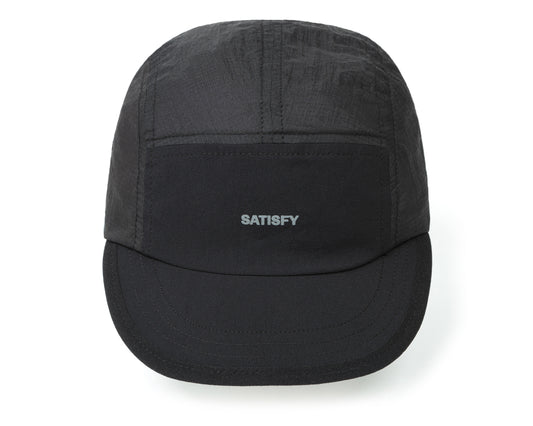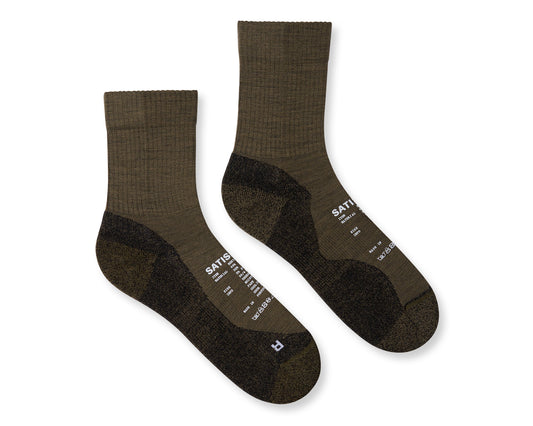
I don’t know if you remember, but a couple of issues back, I thought that if I interviewed a cult deprogrammer, I would learn everything I needed to start my own running cult (The Sisterhood of the Miraculous Fast Boy). In the end, that didn’t work out because some square tipped off the pigs, so now I’m turning my hand to trail race directing, and to help me figure out how to get started, I called up the legendary Jamil Coury.
Jamil is a fourth-generation Arizonian and the owner and CEO of Aravaipa Running, a community-focused trail and endurance race company that offers more fun (gnarly) running races than your family has toes. Ultra-trail is in Jamil’s blood. If you cut him, he bleeds cactus juice. If you push him off a cliff, he runs down it like a goat. If you phone him about organizing your own ultramarathon (working title: Blister Pete’s Spirit-Withering Satanic Death Challenge 350), he gives you the straight dope.
How did you get started directing races? You were actually meant to be an accountant, right? Was that the original plan?
Well, I’d say the original plan was to own my own business, which I always dreamt of doing. But, yeah, I went to school for business; accounting and economics were my majors. And then I still didn’t know what I wanted to do or how to go about the whole business thing, so I did a year of tax accounting while I tried to figure things out, and then, fortunately, I landed an opportunity to take over a race, and the rest is history.
Cool. Are you glad you skipped becoming an accountant? There must be accountants out there who are jealous of what you’re doing.
I actually really enjoy accounting and bookkeeping, oddly enough, but I do it for my own stuff now.
Were you super into mathematics as a kid?
Pretty strong in math, yeah.
What was your weak subject in school?
Hmmm... I don’t know...
You can’t be good at everything.
I mean, I wasn’t good at everything, but I did pretty well in school.

'I was getting scratched up, and there was a thunderstorm... It was kinda like a really wild, raw experience, and I was pretty hooked after that.'
You ran cross-country in school, right?
Yeah, I kinda ended up there. I tried out for golf and soccer, and I didn’t make those teams, then I decided to do track freshman year of high school, and they don’t cut anyone, so I was able to participate. Then I ran cross-country and track the rest of high school.
At what point did you realize, like, okay, this is what I do forever now?
You mean with running stuff?
Yeah, when did you become addicted?
Well, it was a love-hate thing in high school, and in my first year of college, I kinda stepped away from it. I didn’t run for the college team or anything...
What happened?
I still enjoyed being active, but I was just trying out different things—mountain biking, I did a triathlon—but then I found out about the local Phoenix trail runners where I live in Arizona, and the longer distances they were doing, and I started going on some runs with them. I remember I went in this free, fat ass type of event they had; it was a 25-mile mountain marathon. That was a defining run. It was called The Tonto Fun Run. I was getting scratched up, and there was a thunderstorm... It was kinda like a really wild, raw experience, and I was pretty hooked after that.
That’s awesome. What’s a ‘fat ass’ for the people at home?
A fat ass is a race with no entry fee, no course markings, no aid stations, and they don’t promise anything. There were maybe 25 people [at The Tonto Fun Run], and you just show up; someone’s loosely organizing it. Maybe they’ll give you a time if you write down your finish time at the end; there is no cost to it, and people just bring snacks for after they finish.

'Right now, we’re developing our livestream business, so I’m doing a lot with that. I’m pretty involved in the tech side of things for that and the actual creation of it.'
Can you still do a fat ass these days? It seems like something the powers-that-be would have clamped down on.
You definitely can, just so long as you’re not charging money and the event stays small enough. I mean, this isn’t something that would typically show up on a registration platform; it’s always, like, a local club organizing it... But they’re definitely still happening. Usually, it’s less than 75 people, and you’re not charging money, so you don’t have to secure any sort of a permit or anything.
That’s cool. So, you direct legitimate races—many legitimate races. I’m wondering what is the first thing you do when piecing together a new event. What are the steps?
Well, step one is going to be the course: what is your course going to be? So, where is it going to happen? What’s the route? Maybe you’ll map that out first, perhaps you’ll run the course in pieces, or you’ll drive around to the different parts of it; and then there are other things like where are you going to stage the start and finish? Where are people gonna park? Where are the aid stations gonna be? So, initially, you come up with the outline of the race, and then from there, you’re going to have to determine who owns the land where the course takes place: is it in a park? Does the local city government own it? Is it federal land or national forest land? Then you have to source permits, etcetera. Those are the initial steps.
And how long does it typically take? I know they’re all different, but say you were putting together a 50 miler in Arizona, like, how long from ‘Okay, we’re going to do a race’ to ‘On your marks, get set, go’?
I mean, I would say, minimum... Maybe six to eight months? But probably more like a year if you want to do it right. With most events, it’s a multi-year thing to get it where you want it to be.
Wow. And Aravaipa has around 50 different races under its umbrella, right?
Yeah, at least that.
At least! God, man. What’s your day-to-day look like? How are you keeping those plates spinning? I feel like one race would be hectic enough.
Well, at this point in time, I don’t directly direct many races, although I still do have a couple right now. We have a team of race directors, and we have a director of events, but I’m touching a lot of different parts of the business on a day-to-day basis: answering questions, assisting the team... Like today, I was conducting some interviews for Javalina, which is coming up, so I was hosting and chatting with different athletes.
Right.
And I’m involved in a lot of planning and reviewing of things. Right now, we’re developing our livestream business, so I’m doing a lot with that. I’m pretty involved in the tech side of things for that and the actual creation of it. Like, we’re not at the point yet where we have someone who is fully in charge, producing all our livestreams and handling everything. It’s very much being built up, and it’s still at a very organic stage, which is sort of how I’ve built a lot of this stuff up. Most things we do, I, at one point, did them, and it grows from there.
So, when you first got started, you took over the Javelina Jundred, but did it feel grassroots-y, or was it like, ‘Okay, this is a business. Let’s go’?
No, it was very grassroots. When I took over that event, we basically donated the proceeds more or less back to the park, which wasn’t a lot at the time, but it was a few thousand dollars that we would donate back. Compared to what it is now, it was very grassroots. But it was a pretty sizeable event. I mean, there were about 150 people who would register for it. So, back then, it wasn’t as big as Western States or Leadville, but it was a reasonably well-known and well-attended event.

'I think as we’ve expanded and grown, I’ve had a tough time striking that balance. But also, I’ve checked off a lot of bucket list things that I wanted to do in the sport...'
Cool. Okay, this next question is a heavy one... So, I’ve only been running for about five years... How long have you been running, like 25 years? Longer?
Yeah, longer than that... I’ve been running ultramarathons for eighteen years—
No shit?
Yeah, since I was 20.
Right, so for me, one of my concerns when I started working at Satisfy was this: will working in the world of running make me not like running as much?
[Laughter] Right.
And so far, the answer has been no. If anything, I’m more excited about running than ever before. But what’s it like for you? Do you ever think, ‘Oh my god. Running, running, running—I’ve had enough of this shit!’ Do you ever get like that?
I mean, yeah, it definitely shifts over time. The last couple of years have been a bit tough on me. I’ve been running less and racing less. I think as we’ve expanded and grown, I’ve had a tough time striking that balance. But also, I’ve checked off a lot of bucket list things that I wanted to do in the sport, like, you know, I’ve raced Western States, I’ve raced Leadville 100, I’ve done UTMB twice, I’ve done CCC and OCC and TDS, I’ve done the Hong Kong 100 K, and I’m a six-time Hardrock finisher, I’ve had six Barkley attempts...
Damn...
I’ve done Tahoe 200, Cocodona 250, like, yeah, I could keep traveling around and doing more 100-mile races and more 50-mile races, but it’s like, okay, I’ve done a lot of that, and it’s a lot of the same—at least, that’s how I feel now. But I don’t know... I still enjoy it, and I still have aspirations, but right now a lot of my energy and drive is directed toward making awesome livestreams for the community, so the energy I used to put into training hundred-mile weeks and traveling to locations to run races is now put into organizing events and producing this livestream.
That’s cool. What races have you livestreamed?
We did Hardrock livestream, Mammoth Trail Fest, Run Rabbit Run, and Bandera this year.
Wow.
They were other people’s events, but we produced a livestream for them.
Do you have any hobbies outside of running? Like, Brice is a runner and works in running, but he also builds sick remote-control cars in his free time. Do you have something like that you do that isn’t about running?
Well, I feel like whatever I get interested in, I always find a way to bring it into the business. So, my recent hobby outside my job was making videos, which morphed into making YouTube videos... And now the challenge is livestreaming, like... It’s not like I’m tinkering with electronics, but I’m definitely using technology to create something new, and to me, that is a hobby of sorts. It’s not like, oh, I need to build this livestream for the business so I can make a lot of money, or I want to grow the revenue by this or that amount—I genuinely love the challenge of trying to livestream events in remote locations and using the latest technology to piece that together, so there’s something there, I think. It’s more than just a job.

'More than anything, I think livestreaming provides a forum, especially with the chat component where everybody is in the same room watching, and they can comment and just have a place to go.'
The job is the hobby, which is incredible. I was going to suggest a potter’s wheel in the garage, but it doesn’t sound like you need it.
[Laughter]
So, with the livestreaming, what are we talking, drones following athletes and that kind of thing?
Yeah, we’ve got commentators hosting on YouTube and interacting with people in the comments, and then we’ve got live footage coming in from the course, so we’ve got people at the start line; sometimes we have a field reporter that’s like, ‘Hey, welcome, this is what I’m seeing out here,’ and then we’ve got drones out on the course where possible, and runner cams, bike cams... We’re trying to integrate a timing system so we have stats to pull in...
Right, right. Ultra-trail seems like an almost untapped live sports sensation. Like, even if you weren’t a runner, you’d tune in the same way you would for a car race, maybe. Like, who doesn’t want to watch people running like fuck down a mountain?
Yeah, and also, it’s beautiful.
The scenery.
Yeah. Right now, the challenge is getting the quality good enough so that people stay engaged. If it’s really choppy, you’re not going to necessarily stick around, unless you have great commentary to get you through those challenging sections where you can’t get great coverage. But the technology is always improving.
How did people follow a race before now?
Like, Facebook or Twitter updates? You had to make sure you refreshed the page to find out what was happening, but now you can actually watch these things in real-time. More than anything, I think livestreaming provides a forum, especially with the chat component where everybody is in the same room watching, and they can comment and just have a place to go.
Okay, last question: If I said, ‘Hey Jamil, I’m thinking about getting into directing trail races,’ what would you say?
I’d say... Oh, man...
Stay out of Phoenix, Arizona, for a start.
No way! Go for it! No, I would say you should ask yourself what makes your event unique. Also, it doesn’t always need to be the most iconic course; there can be successful events of all kinds... Other tips: it’ll probably take longer to organize than you think, it’ll be harder than you think, and you’ll have a lot of sleepless nights race week just thinking about the details. But it’s worth it in the end.
Is it worth it?
Totally.

In This Issue

Notes from the Underground
Deleting Miles with Sarah Ostaszewski
READ
High Rotation
Max Jolliffe
READ
Get Possessed
Going the Distance
READ
The Knowledge
Jamil Coury & How To Direct an Ultra Race
READ
Welcome to Earth
What is Distance Training?
READ
Highway to Health
Shin Splints
READ
Phone it in
Jakob Åberg
READ
Eat it
How to Make Hell's Bells Gels®
READ
The Bullshit Report
Bad Knees
READ
Smoke Signals
Smoke Signals
READ
Your Running Stars






